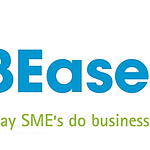Costs – While much attention has been paid to the engagement issues faced by large employers, Toronto based QCVB shifts the focus to businesses that employ between 50 and 399 employees, SMEs that we hope will be the driving force of economic recovery. Over a ten-year period, with more than 111,000 employees surveyed, this initiative provides solid evidence of the benefits of having an engaged workforce.There is a very real bottom-line cost to disengaged employees, explains QCVB Project Development Director Einar Westerlund: “The business cost of each disengaged employee in an organisation is in the neighbourhood of $10,000.” And conversely, there are major benefits to attracting and retaining engaged employees. For example, the study’s data shows that organisations with the most engaged employees achieve:
-
65% greater share-price increase
-
26% less employee turnover
-
100% more unsolicited employment applications
-
20% less absenteeism
-
15% greater employee productivity
-
Up to 30% greater customer satisfaction levels
“Attracting and retaining the best people is critical to the success of any company,” says Elspeth Murray, QCBV Director and Associate Dean of MBA Programs. “It’s especially important, though, in smaller organisations, where resources are often stretched to the limit… and the perception may be that measuring employee engagement is a luxury they can’t afford.” The QCBV/Aon Hewitt survey shows this is far from the case.
Causes – Whether for big or small employers, engagement has moved high up the boardroom agenda. But boards operate best when presented with measurable data. Invaluable data on the causes of disengagement is provided by TINYpulse in a recent survey of more than 400,000 employees at over 300 organisations. Here are the 7 key conclusions about employee engagement today from the TINYpulse research:
1. Only 42% of employees know their organisation’s vision, mission, and values. That’s an alarmingly low number. Too many executives are not communicating and reinforcing their company’s guiding principles and mission.
2. 82% of respondents claimed that their manager clearly outlined their role and responsibility. At the day-to-day team level, it seems that managers are able to effectively set expectations and accountability.
3. Employee happiness is more dependent on co-workers than direct managers. Employee happiness is 23.3% more correlated to connections with co-workers than direct supervisors. There is a very strong correlation between employee happiness and their rating of co-workers.
4. Team play and collaboration are the top trait employees love about their co-workers. In the recruitment and interview process, leading companies must incorporate opportunities to test and screen for these vital characteristics in candidates.
5. 18% of responses included a suggestion, and organisations that don’t promote employee suggestions are at an innovation disadvantage. Businesses that don’t crowdsource innovation and suggestions from their employees are missing a huge opportunity. If you’re relying on an open door policy, then you’re not fully leveraging your most prized asset – your people.
6. 36% of responses provided peer-to-peer recognition, which proves that a lightweight and regular system boosts intra-organisation recognition. As organisations become more decentralised, virtual, and matrixed, there’s a growing need to provide regular recognition that goes beyond the antiquated one-on-one supervisor-to-employee relationship.
7. Management transparency is the top factor when determining employee happiness. The cost of improving transparency is almost zero, but requires an ongoing dialogue between management and staff. An increasing number of companies will be using transparency as a weapon to attract and retain top talent.
As economies recover and jobs become more available, employees will be less willing to work for companies that have not addressed these key reasons for disengagement or be willing to settle for jobs that do not offer flexibility and contribute to a sense of meaning. Employers who deliver true employee engagement will see benefits to both their brand and their bottom line.
The content of this article is not owned by Engage for Success and was originally posted on the IEDP.
Painting by Hungarian American artist Francis De Erdely (1904–1959), title unknown – circa late 1930s (source: Spencer Jon Heflen Fine Arts www.helfenfinearts.com)




